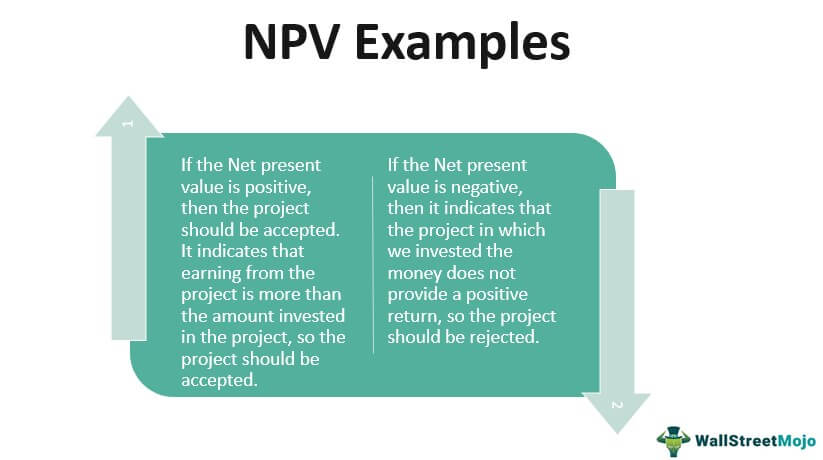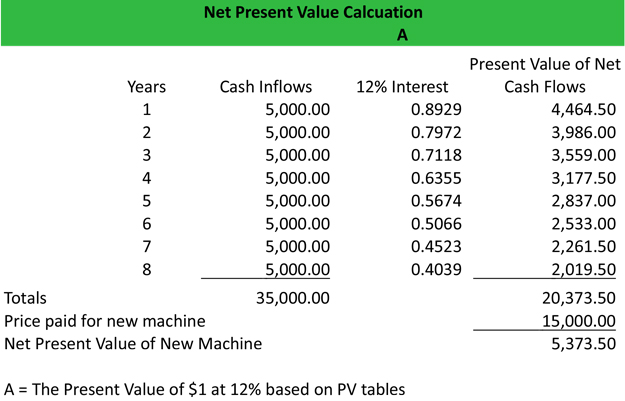
NPV is an essential tool for financial decision-making because it helps investors, business owners, and financial managers determine the profitability and viability of potential investments or projects. The internal rate of return (IRR) is calculated by solving the NPV formula for the discount rate required to make NPV equal zero. This method can be used to compare projects of different time spans on the basis of their projected return rates.
Example 1: Real Estate Investment
Hopefully, this guide’s been helpful in increasing your understanding of how it works, why it’s used, and the pros/cons. Typically, investors and managers of businesses look at both NPV and IRR in conjunction with other figures when making a decision. And the outcome couldn’t be simpler – the investment with the highest Net Present Value is the most likely to give you a good return on your initial cost.
Cash Flow and Liquidity Management
Additionally, gain proficiency in performing sensitivity analyses to assess how changes in assumptions affect investment outcomes, preparing you to make informed, data-driven decisions. The Investment Decisions are a core area essential to strategic planning and financial management. You’ll examine capital budgeting techniques, including net present value, internal rate of return, and payback period, to assess potential investments. This section covers risk analysis, cost of capital, and the evaluation of long-term financial projects. The discount rate is a rate used to determine the current value of future cash flows (AKA the NPV or net present value). A discount rate could represent some sort of opportunity cost or risk rating.
The 13 Week Cash Flow Forecast
This concept is the basis for the net present value rule, which says that only investments with a positive NPV should be considered. If, on the other hand, an investor could earn 8% with no risk over the next year, then the offer of $105 in a year would not suffice. Good cash flow management supports both operational needs and strategic initiatives. Stocks represent ownership in a company and allow investors to benefit from the company’s growth through price appreciation and dividends. If you’ve never calculated net present value (NPV) before, the process can feel kind of perplexing.
- It also assumes that cash flows will be received at regular intervals, which may not always be the case.
- If we calculate the sum of all cash inflows and outflows, we get $17.3m once again for our NPV.
- The cost of capital guides the company’s capital structure decisions, helping determine the optimal mix of debt and equity financing.
- Say a fast-food chain is trying to decide whether to expand into a new market which entails opening up 10 more locations.
Step 1 of 3

It’s the method used by Warren Buffett to compare the NPV of a company’s future DCFs with its current price. Net present value (NPV) is the difference between the present value of cash inflows and the present value of cash outflows over a period of time. NPV is used in capital budgeting and investment planning to analyze a project’s projected profitability.
Part 2: Your Current Nest Egg
The basic NPV investment rule is that projects or investments should only be pursued if they’ll lead to gains or productive gains. This means that the investment or expansion project is likely to yield a gain. When the net present value is below zero, you have negative NPV which means the project or how do i connect with a tax expert in turbotax liv investment is likely to result in a loss. • A positive NPV indicates that the earnings from an investment are expected to exceed the cost. A project or investment with a positive NPV is implied to create positive economic value, whereas one with a negative NPV is anticipated to destroy value.
This will bring up the function where you can enter the rate and each value you want to calculate. You could run a business, or buy something now and sell it later for more, or simply put the money in the bank to earn interest. The period from Year 0 to Year 1 is where the timing irregularity occurs (and why the XNPV is recommended over the NPV function). A financial professional will offer guidance based on the information provided and offer a no-obligation call to better understand your situation. Our mission is to empower readers with the most factual and reliable financial information possible to help them make informed decisions for their individual needs.
This can help when comparing multiple investments to decide where to put your money when you have a limited amount of capital to work with. • The NPV formula incorporates the time value of money, emphasizing that money now is worth more than the same amount in the future. • Net Present Value (NPV) measures the difference between the present value of cash inflows and outflows over time. If we calculate the sum of all cash inflows and outflows, we get $17.3m once again for our NPV. On the topic of capital budgeting, the general rules of thumb to follow for interpreting the net present value (NPV) of a project or investment is as follows. The Net Present Value (NPV) is the difference between the present value (PV) of a future stream of cash inflows and outflows.
CFI is the global institution behind the financial modeling and valuation analyst FMVA® Designation. CFI is on a mission to enable anyone to be a great financial analyst and have a great career path. In order to help you advance your career, CFI has compiled many resources to assist you along the path. Net Present Value (NPV) is the most detailed and widely used method for evaluating the attractiveness of an investment.




Necesitas Date de alta o Entrar para poder comentar